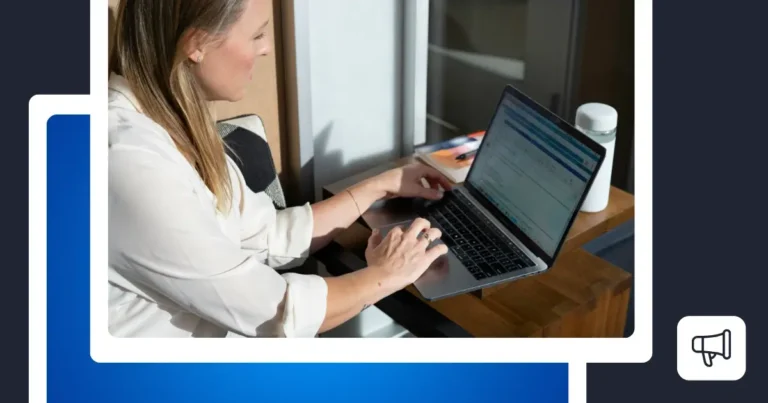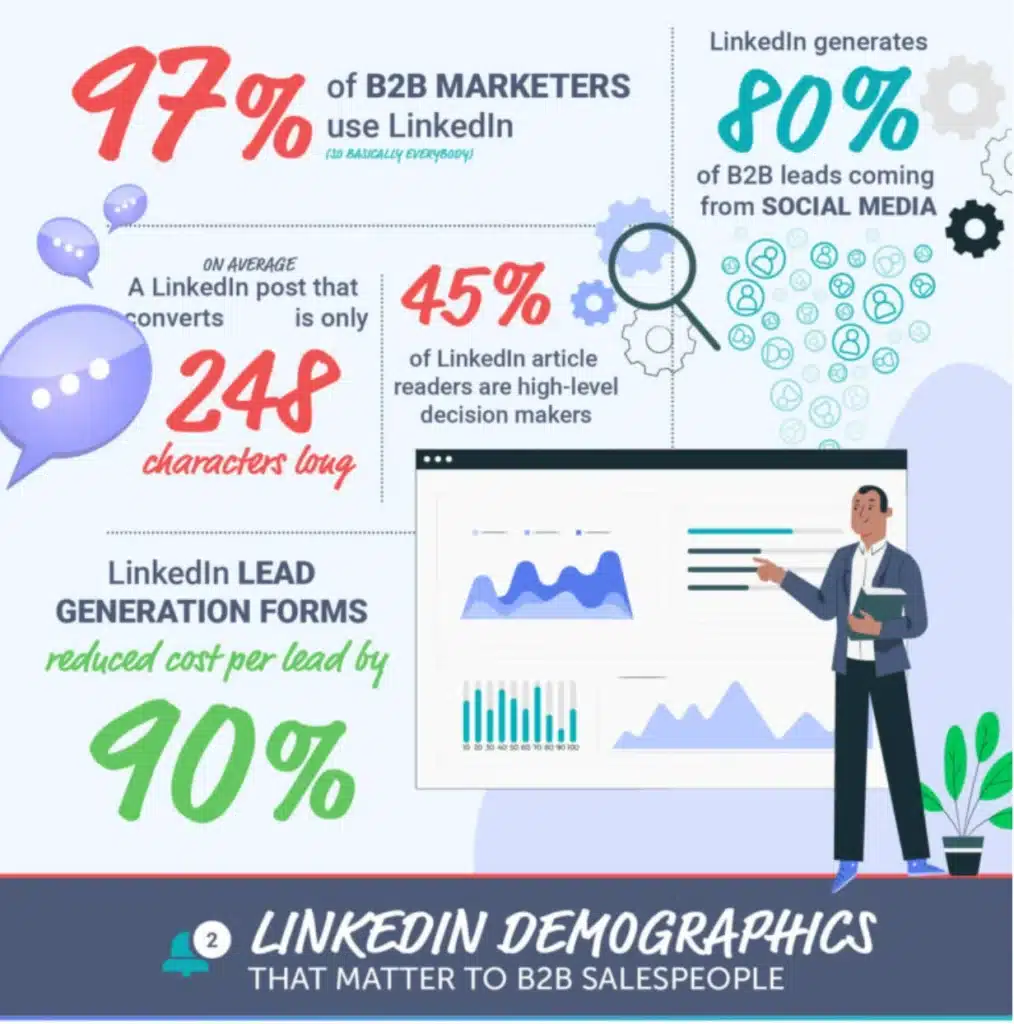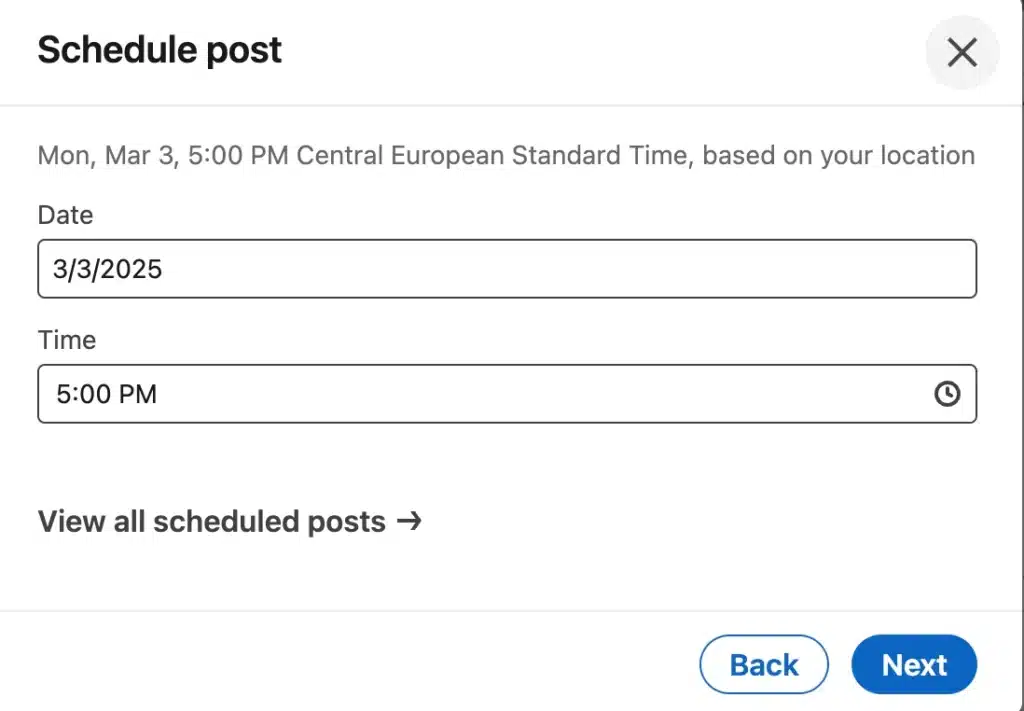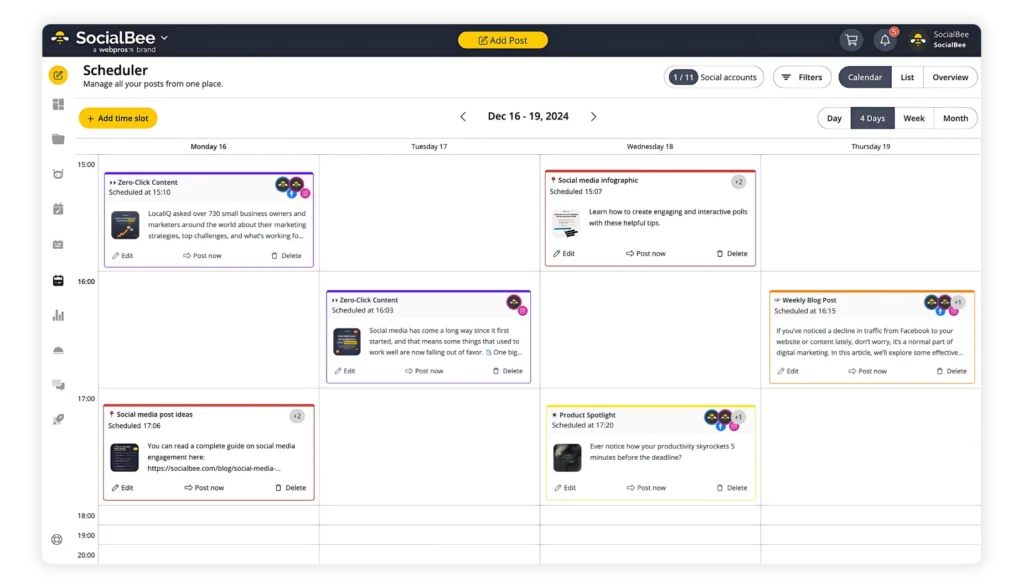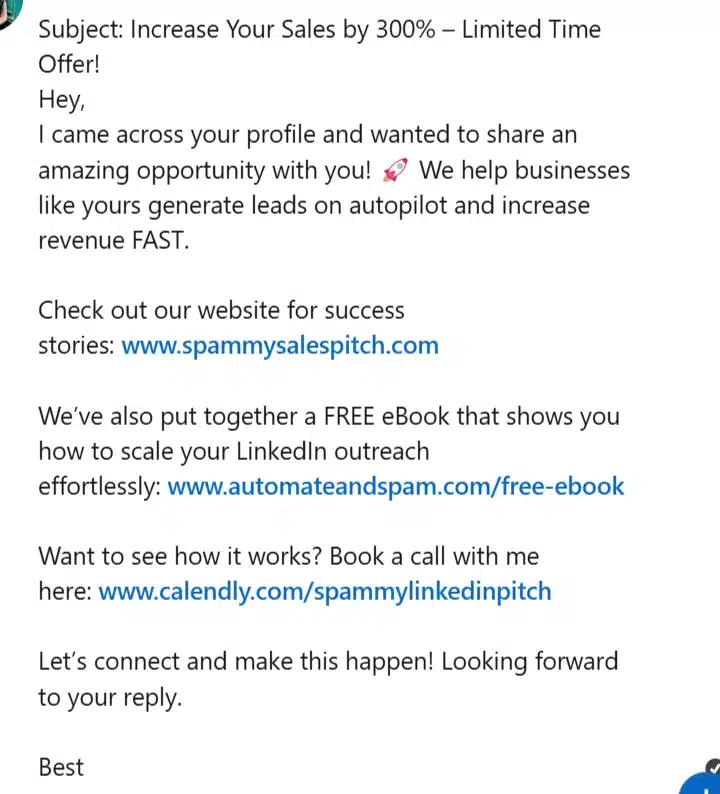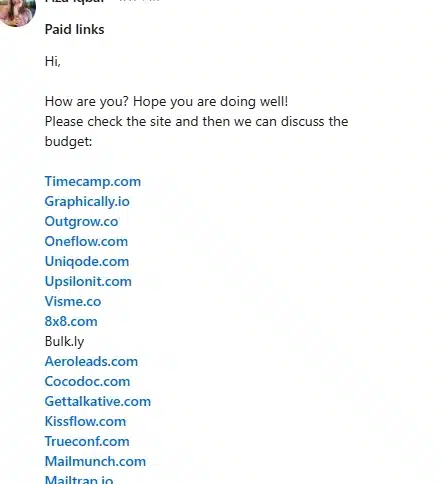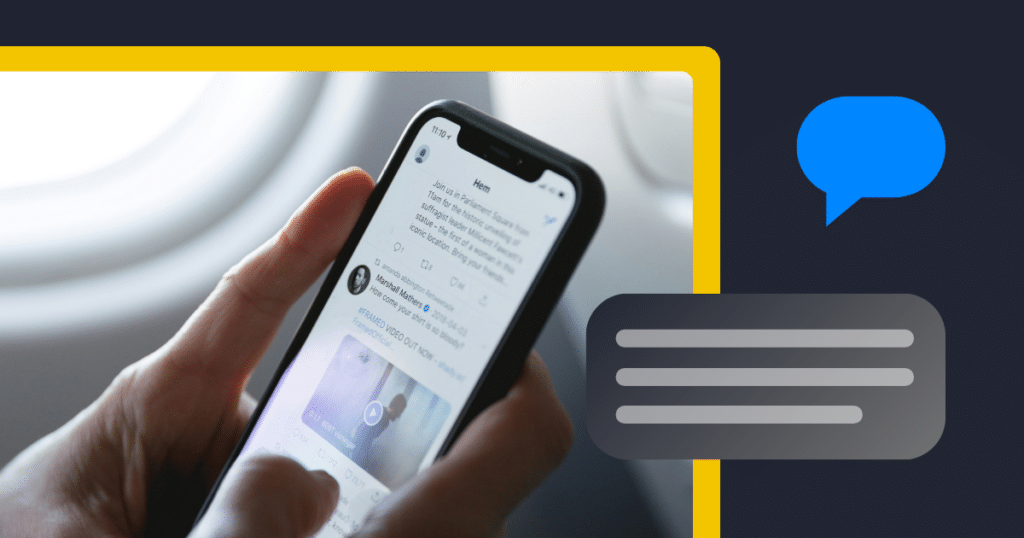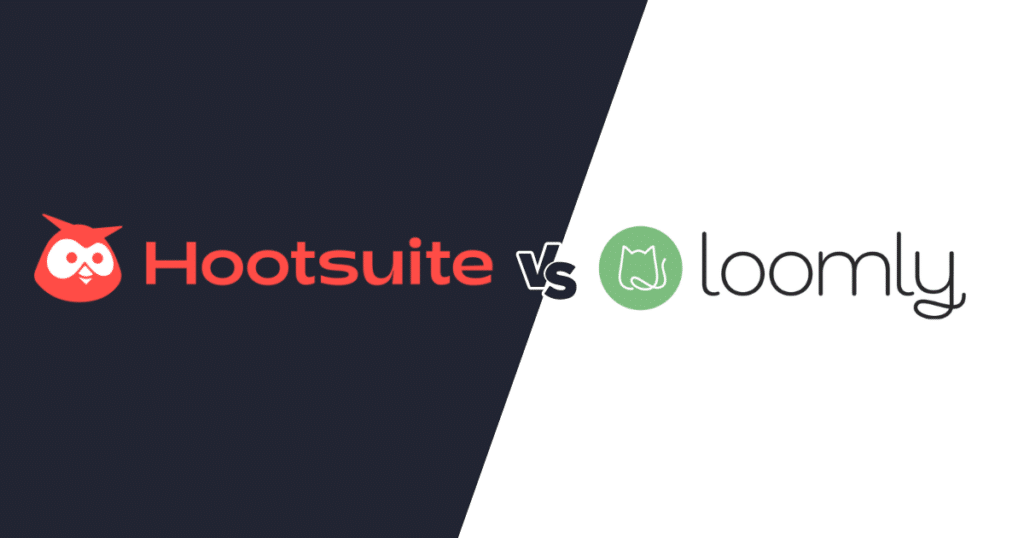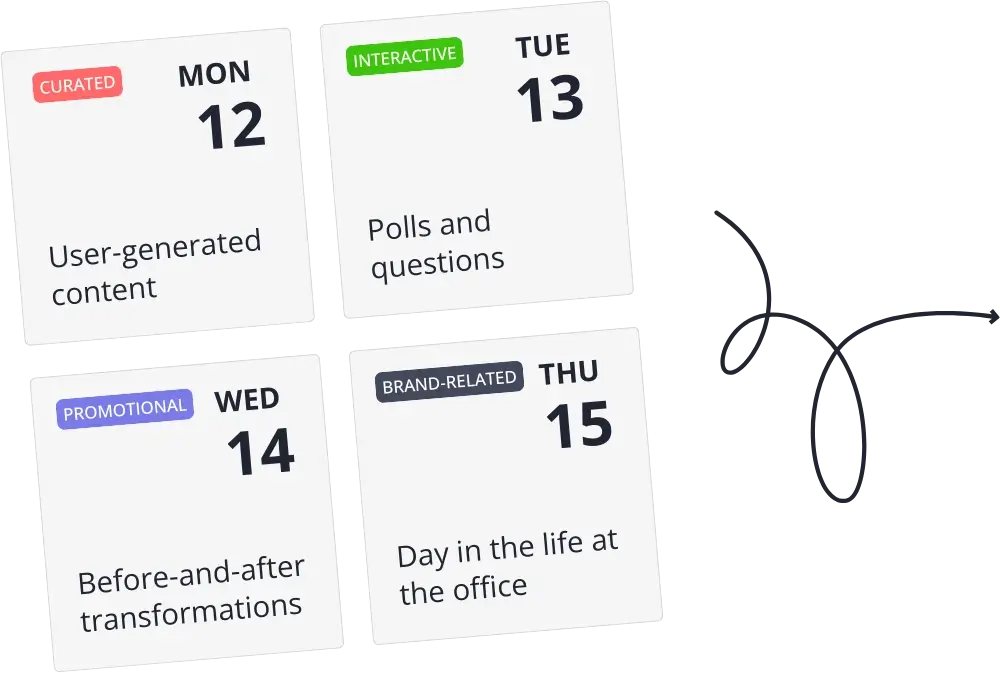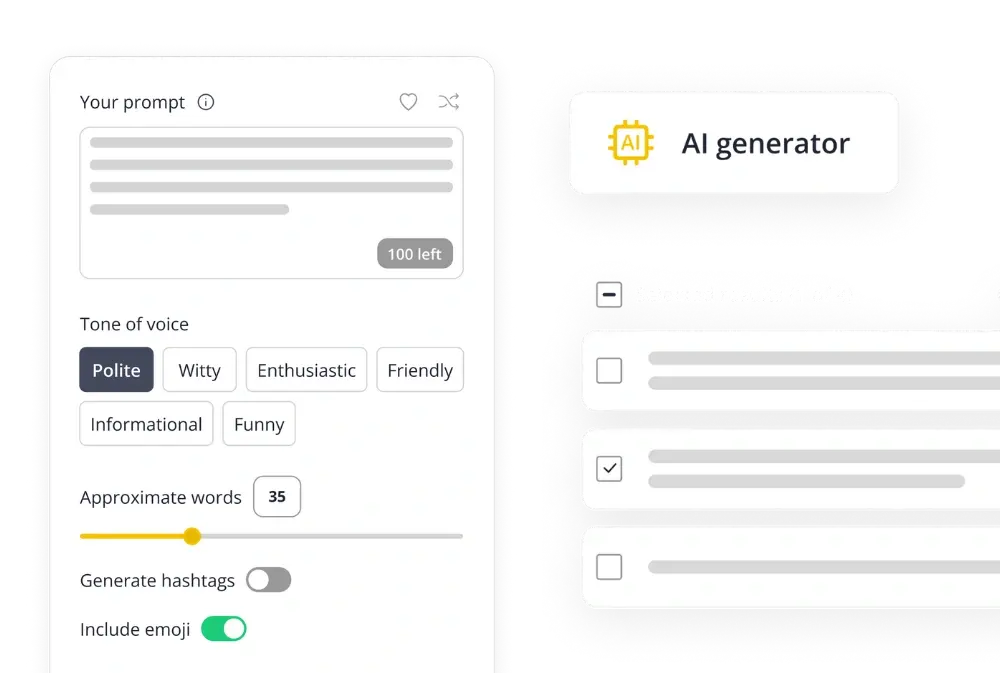
Guest Post
If you want to be productive on LinkedIn, you’ve probably considered automating LinkedIn messages and posts. After all, there are only so many personalized connection requests, converting messages, and posts you can craft daily.
Although LinkedIn is the hub for lead generation, networking, and building brand authority, it takes time (and consistent posts and outreaches) to grow here.With over 1 billion professionals on the platform, regular engagement is the way to go.
Here, LinkedIn automation is the cheat code. It helps you stay visible, nurture prospects, and boost engagement while freeing up time for more important tasks. This guide will show you how to use automation without losing your personal touch.
Ready to find out more?
We’re SocialBee LABS SRL, part of WebPros. We use the information you provide to share relevant content and product updates, as outlined in our Privacy Policy. You can opt out anytime.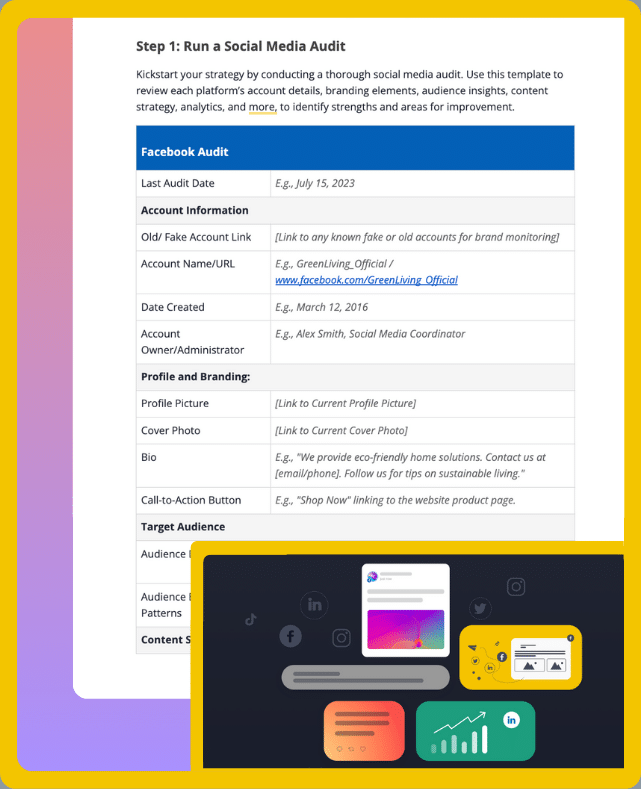
Short Summary
- Automating LinkedIn messages and posts saves time and keeps your business active, so you can focus on more important tasks while staying engaged with your audience.
- You can make automated messages feel more personal with the RRR approach: Relevance, Reward, Request. Instead of replacing real connections, automation should support them. Mixing automated outreach with genuine interactions helps you get better results on LinkedIn without sounding robotic.
- While outreach LinkedIn automation tools handle connections and messaging, SocialBee focuses on LinkedIn post management. With SocialBee, you can create and schedule posts, generate AI-driven captions, recycle evergreen content, and track performance with detailed analytics.
- Using LinkedIn automation wisely is key. Start slow, keep messages personal, and stay consistent to avoid triggering security filters.
- LinkedIn doesn’t officially support automation, so overuse can lead to account restrictions. The best approach is to follow the platform’s guidelines, mix automated outreach with real interactions, and keep your content valuable and relevant.
Why automating LinkedIn messages & posts matters
Running a business means juggling meetings, finances, and last-minute problems that always seem to pop up. With so much going on, it’s easy to put networking and content creation on the back burner. But if you want to grow and scale, maintaining a strong LinkedIn presence is a must.
Regularly posting, LinkedIn prospecting, and following up are especially crucial in B2B marketing and recruitment, where 97% of marketers rely on the platform.
Source: Salesintel
And that’s where LinkedIn automation can help you maintain the flow.
LinkedIn automation uses software to put the tedious tasks, such as sending connection requests, follow-up messages, and posting, on auto-pilot. You are doing it to save time and money.
But more than that, automating LinkedIn messages and posts will help you:
- Generate leads and outreach proactively
- Boost engagement and growth
- Scale brand growth through LinkedIn automation
1. Generate leads and outreach proactively
LinkedIn automation keeps your outreach consistent without the manual effort.
Instead of messaging prospects one by one, LinkedIn automation software help you send personalized messages, schedule follow-ups, and keep conversations moving.
2. Boost engagement and reach
Automation is also incredible for skyrocketing reach and engagement.
Imagine having a tool that helps you connect with hundreds of niched-down prospects and experts every week. Couple this with a tool to post your content at the most optimal time to drive maximum visibility.
3. Scale brand growth through LinkedIn automation
Growing your presence on LinkedIn requires more than occasional posting. It involves networking, messaging, and content strategy, all of which can be overwhelming.
Automation streamlines these tasks, allowing you to engage with leads, send LinkedIn connection requests, and schedule content in advance without constant manual effort.
Let’s put these benefits into perspective with a real-world example:
Imagine you’re launching a startup and need to build industry connections fast. Manually reaching out to potential partners and clients is time-consuming and only scalable to a certain extent.
Automation allows you to target the right audience, send personalized outreach, and follow up efficiently, just like you would, but without the extra workload.
The result:
- Immediately expanded reach.
- Better engagement on your posts and an overall more active profile lead to higher connection acceptance and response rates.
- Improved conversion courtesy of timely outreaches and personalized messages.
With automation, you stay active on LinkedIn without spending hours on outreach, allowing you to focus on business growth while maintaining a strong presence.
How to automate LinkedIn messages
Until now, LinkedIn has not offered any built-in message automation (at least in the traditional sense). However, the platform has evolved to include features to enhance your communication and outreach efforts.
For example, LinkedIn offers AI-powered message suggestions based on the context of your conversation. These can include follow-up prompts, replies to common questions, and even recommended ways to introduce yourself to new connections. Other features, like better media options (GIFs, videos, interactive graphics), also help make messages more engaging.
LinkedIn Sales Navigator takes it a step further with automated lead recommendations and outreach templates, making it easier to connect with the right people.
The good news is that LinkedIn allows approved third-party tools to automate most messaging tasks. So, what exactly can be automated?
Using LinkedIn automation tools, you can:
- Send personalized connection requests – Craft a message that makes your invite more likely to be accepted.
- Automate InMails – These tools help you send personalized messages to people outside your network, even if you don’t have their contact details.
How to automate LinkedIn posts
If messages and outreach are the heart of your LinkedIn growth, then posting here is your voice. It’s because, while messages build connection, posts (and engaging with posts from professionals in your niche) build authority.
Fortunately, LinkedIn has introduced some native features (though with limited automation capabilities) to help you post consistently. These include:
- Post-scheduling in advance (>90 days).
- LinkedIn newsletter automation for recurring ones. The platform automatically notifies subscribers about new issues.
- AI-powered post suggestions, recommended hashtags, and AI-driven article writing.
But, as mentioned, these features are limited at the moment. You can only schedule posts up to 90 days in advance, and every post must still be crafted manually.
However, post automation tools can streamline your workflow. They help with content creation, scheduling, and engagement, such as replying to comments and DMs.
Here are some key features of post automation tools:
- AI-generated content (full posts based on keywords)
- Visual content support (videos and images)
- Content library for easy access to reusable posts
- Bulk scheduling to plan posts in advance
- Cross-platform posting from a single dashboard
Posting on LinkedIn is just the start. To get real results, focus on engagement, consistency, and quality connections.
The right automation tool can help streamline your process, track engagement, and optimize your strategy, without losing the human touch.
SocialBee goes beyond scheduling. It tracks performance, measures audience growth, and integrates with multiple platforms, making LinkedIn management easier while keeping your outreach strong.
Make the most out of SocialBee’s features!
Best practices for LinkedIn automation
So far, it all sounds too good to be true. You don’t have to do too much. Add automation software to your toolkit, and your LinkedIn growth will be on autopilot. And you are partly right. That’s why such tools exist, after all: to make your life easier.
Automating everything blindly can do more harm than good. To make automation work for you, focus on adding real value to your network. The key is to be intentional: personalize your approach, time your interactions well, and always stay within LinkedIn’s rules.
So, here’s how you can make the automation work for you, not against you:
- Lay the groundwork first
- Automate LinkedIn messages with caution
- Personalize your messages
- Respond and interact
1. Lay the groundwork first
Suppose a friend of yours just created a new LinkedIn page and, with automation, gained 1,000+ connections overnight. You’d be happy for them, but also a little skeptical, right?
The LinkedIn algorithm feels the same way. Rapid, unnatural growth can trigger red flags, which is why it’s important to build a strong foundation first.
Before using automation, take time to establish at least 100+ first-degree connections through organic engagement. Start by connecting with people who have viewed your profile and those in the “People You May Know” section.
You can also look for specific positions in the LinkedIn search results, making sure your community is very targeted.
Once your network starts growing, you can scale up business development efforts carefully. A multichannel outreach tool helps you connect with people across LinkedIn, email, and X. It lets you scale up your connection requests while keeping them personalized and relevant.
A good starting point is 10-20 invites per day. As you develop a natural engagement pattern, you can work your way up to 150-200 connection requests per week. This steady approach not only keeps your LinkedIn account safe but also helps you improve search results and make meaningful connections that lead to real opportunities.
2. Automate LinkedIn messages with caution
LinkedIn message automation is a slippery slope. If you make one wrong move, your messages will risk being marked as spam. Send enough spam messages, and your profile can land in LinkedIn jail (more on that later).
Here’s an example of a message that can get your account restricted:
Even worse, if your message includes too many links and tags, especially without any prior interaction with the LinkedIn users you are approaching. By doing this, you risk fueling distrust. You also don’t want to sell immediately after connecting.
The overuse of sales-y language, like “amazing opportunity” or “increase sales by 200%”, can also make outreaches feel sketchy. Sales teams would know you have to come up with facts for all those statements in your outreach campaigns.
That’s where the most trustworthy and safest LinkedIn automation tool can make the difference. Instead of spamming with cold, bot-like messages, the tool will help you:
- Automate connection requests with custom notes based on job titles, industry, or engagement level filters
- Improve personalization by using placeholders (first names, company names, or job titles) and context-driven texts, say referencing their latest post
- Send smart, time-delayed followups through custom response triggers, ensuring the message feels relevant
Other LinkedIn automation tools even allow you to automate engagement beyond just messages. You can automate profile visits, skill endorsements, and group messages. Just imagine how much time you’ll save. Add network growth and opportunity, now, who wouldn’t want a slice of that pie?
3. Personalize your messages
Every automated connection request, InMails, or follow-up must be personalized. This includes addressing people by their names, mentioning mutual connections, and following up with the right context.
The perfect way to structure your automated LinkedIn outreaches is to use the RRR technique: Relevance, Rewards, Request.
- Relevance: Convey the relevance through mutual connection, shared industry, or work of interest to show why connecting with you makes sense for them.
- Reward: Highlights what’s in it for them. Show that by connecting, they’ll gain insights, networking, or shared expertise.
- Request: Lastly, end the note (or message, in the case of InMails) with a low-pressure CTA, like an open-ended question.
The idea is not to jump to pitching. Instead, being with a value-first conversation.
4. Respond and interact
Your LinkedIn automation tool will set the conversation in motion, but real engagement and conversions happen in the follow-up. It’s not just about sending automated messages, but about keeping the conversation going in a way that feels natural and meaningful.
Whether you’re connecting with potential clients, industry peers, or recruiters, how you engage after the initial outreach determines the success of your efforts.
Here’s a rule of thumb to swear by:
- Respond within 24-48 hours to messages and comments to show you’re active and engaged. Delayed responses can make your outreach feel impersonal.
- Personalize replies by referencing previous interactions or comments. A simple acknowledgment of what they said before builds trust and makes your messages feel more genuine.
- Ask follow-up questions to keep the conversation flowing and set the foundation for future business discussions. Instead of immediately pitching, guide the conversation toward how you can help.
A well-balanced automation strategy combines automating routine tasks like sending connection requests, tracking interactions, and organizing outreach LinkedIn campaigns with manual responses that feel human. This approach makes your connections believe you’re simply great at staying in touch, not just relying on automation.
You can also take it a step further with integrations:
- Use your LinkedIn Sales Navigator account to refine your targeting and ensure you’re reaching the right prospects. Advanced filters help personalize your outreach, making automated interactions more effective.
- Combine LinkedIn messaging with cold emails to increase response rates. Sending follow-ups through both channels keeps your brand visible without overwhelming potential leads.
Potential risks and how to avoid them
Now that we’ve covered the benefits, let’s talk about the risks. LinkedIn isn’t a fan of third-party automation and keeps a close eye on anything that looks unnatural. Overuse can lead to warnings, restrictions, or even a permanently suspended LinkedIn account.
Getting locked out, also known as LinkedIn jail, happens when the platform detects excessive automation. While LinkedIn may issue warnings first, repeated violations can result in losing access to your profile.
To stay on the safe side:
- Avoid spammy behavior, like sending bulk generic messages or stuffing outreach with links.
- Keep your messages personal and relevant using the RRR technique (Relevance, Reward, Request) helps make connections feel natural.
- Engage with your existing LinkedIn profiles and post valuable content to boost credibility.
This message, for example, screams spam (zero personalization and tons of links are a big no!).
If you stay compliant with the rulebook, smart automation will work for you. And always remember, automation exists to help you enhance authenticity, not replace it.
Frequently asked questions
LinkedIn does not officially support third-party automation for actions like connection requests or messaging. Excessive automation can restrict your account.
However, LinkedIn does integrate with tools like SocialBee for scheduling and tracking posts. It also offers built-in automation features, such as content suggestions and notifications.
Yes, automation can help with LinkedIn lead generation, but only when used strategically. It allows you to:
- Personalize outreach messages at scale
- Follow up with prospects automatically
- Track engagement to identify high-potential leads
- Nurture relationships through consistent interactions
By automating these tasks, you can save time while also building meaningful connections that turn into conversions.
LinkedIn engagement, such as replying to comments, mentions, and direct messages, still requires a personal touch for the best results.
In fact, auto-comments and excessive auto-likes are ticking time bombs. They can feel robotic and spammy. Ideally, take 10-15 minutes daily to engage with comments and connections while other automation work in the background.
LinkedIn automation done right
When used correctly, LinkedIn automation can be a game changer for your growth. It saves time, ensures consistency, and helps you scale efficiently.
To build a strong LinkedIn strategy, use SocialBee’s post automation to schedule and manage your content. Stick to LinkedIn’s guidelines, automate wisely, and stay ahead of the competition.
Don’t go yet, if you’ve made it this far, here’s a bonus! You can sign up to SocialBee for a free trial and see how easy it is to automate your LinkedIn posts while keeping engagement natural.

About the author: Daria Erina is a Managing Director of Linked Helper. She joined Linked Helper soon after the project was born and became the first customer support agent. She’s on a mission to make the Linked Helper’s solution feel like a piece of cake to new and existing customers, specifically by creating high-quality content.
